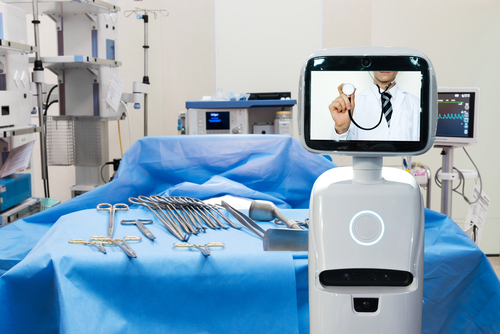Artificial Intelligence : Predicting a surgeon’s next move
M3 Global Newsdesk Feb 15, 2018
With more than 500,000 surgeries performed daily worldwide, there is no shortage of data points to input, measure, analyze, and extrapolate. According to a study in the journal Artificial Intelligence in Medicine, those data may be used to accurately predict a surgeon’s next actions.

The development of context-aware systems is one of the ways artificial intelligence (AI) is making its presence known in everyday medical practice. These systems continuously monitor certain activities to provide accurate and reliable support functions. The main challenge is how to turn data points into useful information that can augment a surgeon’s decision-making abilities.
The field of Surgical Process Modeling has recently entered the operating room (OR) to help gain a more complete understanding of the description of surgeries through quantitative analysis of OR activities. However, this field is fraught with obstacles due to the data’s complexity. Two surgeons performing the same surgery who achieve similar outcomes may use different actions or techniques.
A study led by Germain Forestier, PhD, University of Haute-Alsace, Mulhouse, France, sought to tackle the potential for prediction using low-level data (eg, data points such as cut and suture) to extract higher-level knowledge.
The ultimate goal is to take data points and, using artificial intelligence methods, provide real-time information to a surgical team.
The study’s approach matched an ongoing surgery to a reference set of similar surgeries. They used the next actions performed in the reference set to attempt to make a prediction about the current surgery using four methods:
- Optimal registration of a partial surgery: Optimally compare an ongoing surgery (partial surgery) to a completed prior surgery.
- Voting for high-confidence prediction: Draw a high-confidence prediction for the next action in a current surgery based on the reference surgery.
- Detecting when to predict with high confidence: Detect when to or when it is not possible to predict by using the agreement rate from multiple predictors.
- Weighting the prediction according to sequence similarity: Improve prediction accuracy by giving more importance to similar surgical behaviors.
For this study, the research team used datasets from 24 lumbar disc herniation (LDH) and 18 anterior cervical discectomy (ACD) surgeries. To compare surgery to surgery, the team recorded lists of actions (eg, cut, coagulate, install, irrigate), anatomical structures (eg, skin, muscle, ligament, dura mater), and surgical instruments (eg, scalpel, dissectors, hooks, retractors). The use of an action, anatomical structure, and surgical instrument was recorded as an activity (eg, cut skin with scalpel).
For the LDH group, the dataset included 108 different activities. The ACD dataset included 82 activities. Surgeons were classified as senior or junior surgeons, and measured in three configurations: junior only, senior only, and all surgeries.
The new system was compared with the Euclidean state-of-the-art method for prediction.
Results
All told, the new prediction system was found to outperform the Euclidean method. While the prediction rate for all LDH surgeries was very good, analysis of the data showed that the behavior of senior surgeons was more homogenous than that of junior surgeons. This result led to a more accurate predictability for surgeons in this class.
The system was able to predict the next action with an average precision of 95%. The system did not make a mistake in more than half of the surgeries, but it did not make a prediction 5%.
For the ACD dataset, the new method also outperformed the Euclidean method. The precision rate was 87%, with the best results noted in the senior surgeon subset. When combining both junior and senior surgeons, prediction precision reached 93%, compared with 77% for the Euclidean method.
As an example of a case in which a prediction was not made, only two senior surgeons performed the activity “install, vertebra, fluoroscopy.” The prediction was not made because the system could not provide a majority vote. “Our method is able to consistently automatically decide when not to provide a prediction when it assesses that the current conditions are too dependent upon the current surgery,” the authors wrote. The team was confident their method shows that a surgical prediction method is possible in practice.
“The fact that predicting surgical tasks is so central to the new generation of computer-assisted surgery systems naturally opens up a number of clinical applications,” they concluded. “This information can help ensure a smooth running of the surgical procedure. Another application concerns the training of junior surgeons. Our system could be integrated in a simulation environment in order to provide help and feedback to the junior surgeon. Our system could, on demand, provide a warning to the surgeon about his or her deviation from the standard practice of his or her colleagues.”
This story is part of our Global Content Initiative, where we will feature selected stories from our Global network which we believe would be most useful and informative to our doctor members.
-
Exclusive Write-ups & Webinars by KOLs
-
Daily Quiz by specialty
-
Paid Market Research Surveys
-
Case discussions, News & Journals' summaries